Natural Satellites
A natural satellite, also known as a moon, is a celestial body that orbits a planet or a minor planet. Natural satellites are relatively large compared to their primary planet and are held in orbit by the force of gravity. They can be found in our solar system and beyond, orbiting planets, dwarf planets, and even asteroids.
Characteristics of Natural Satellites:
- Size: Natural satellites can vary in size from small bodies to large, planet-sized moons like Ganymede, which is Jupiter's largest moon.
- Orbit: They orbit their primary planet in a regular and predictable path. The orbit of a natural satellite is influenced by the gravitational pull of the planet it orbits.
- Atmosphere: Most natural satellites do not have an atmosphere, but some, like Saturn's moon Titan, have a dense atmosphere.
- Surface: Natural satellites can have diverse surface features including mountains, craters, valleys, and even oceans or lakes.
Examples of Natural Satellites:
Some well-known natural satellites in our solar system include:
- The Moon: Earth's natural satellite, which has been the subject of human exploration through space missions.
- Phobos and Deimos: The two natural satellites of Mars.
- Europa: A moon of Jupiter that is believed to have a subsurface ocean.
- Enceladus: A moon of Saturn known for its geysers of water vapor and icy particles.
Study Guide for Natural Satellites:
Here are some key points to study about natural satellites:
- Define what a natural satellite is and explain how it differs from an artificial satellite.
- List and describe the characteristics of natural satellites.
- Compare and contrast the natural satellites of different planets in our solar system.
- Research and present information about a specific natural satellite, including its size, orbit, surface features, and any unique characteristics.
- Discuss the potential for future exploration and research of natural satellites, including the possibility of human colonization or resource extraction.
Understanding natural satellites is not only important for astronomy and space exploration, but also for gaining insights into the formation and evolution of planetary systems.
.◂Science Worksheets and Study Guides Third Grade. Weather
Study Guide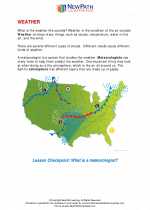 Weather
Weather  Worksheet/Answer key
Worksheet/Answer key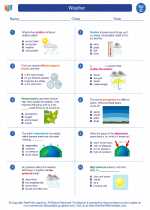 Weather
Weather  Worksheet/Answer key
Worksheet/Answer key Weather
Weather  Worksheet/Answer key
Worksheet/Answer key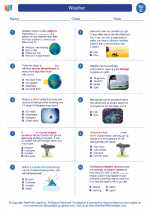 Weather
Weather  Vocabulary/Answer key
Vocabulary/Answer key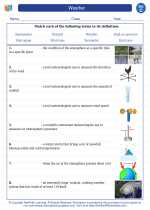 Weather
Weather  Vocabulary/Answer key
Vocabulary/Answer key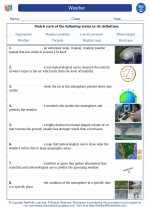 Weather
Weather 

 Worksheet/Answer key
Worksheet/Answer key
 Worksheet/Answer key
Worksheet/Answer key
 Worksheet/Answer key
Worksheet/Answer key
 Vocabulary/Answer key
Vocabulary/Answer key
 Vocabulary/Answer key
Vocabulary/Answer key

The resources above cover the following skills:
EARTH AND SPACE SCIENCE (NGSS)
Earth’s Systems
Students who demonstrate understanding can:
Represent data in tables and graphical displays to describe typical weather conditions expected during a particular season.